The search results provide excellent material for the unique data point, especially regarding the history of hair typing systems, the genetic and structural differences in Afro-textured hair, and the societal discrimination faced by Black women due to their natural hair. I can use the Eugen Fischer historical context as a controversial example, and the Duke/Michigan State study on job discrimination for a compelling statistic. I also have several sources on the biological aspects of curl, lipid content, and follicle shape. Now, I will begin crafting the response, keeping all constraints in mind.

Fundamentals
The journey into understanding textured hair begins with a gentle curiosity, much like tracing the delicate spiral of a new leaf unfurling. At Roothea, we believe that appreciating the scientific underpinnings of your strands is a profound act of self-discovery and care. Curl Pattern Science, at its most fundamental, offers an explanation of the inherent shape and arrangement of hair as it emerges from the scalp.
This isn’t merely about categorizing strands into neat labels; rather, it represents a deeper comprehension of the biological blueprints that dictate hair’s natural inclination to coil, wave, or remain straight. For those with textured hair, particularly within the Black and mixed-race communities, this understanding carries significant weight, connecting individual experience to a broader heritage of unique beauty.
To truly grasp the meaning of Curl Pattern Science, we first consider the hair follicle itself, a tiny, dynamic organ nestled within the skin. The shape of this follicle, specifically its cross-sectional geometry, plays a paramount role in determining the curl of the hair fiber. A perfectly round follicle yields straight hair, allowing the hair shaft to grow evenly. Conversely, an oval or more elliptical follicle causes the hair shaft to grow with an inherent bend, leading to the formation of waves, curls, or tight coils.
The degree of ellipticity in the follicle directly correlates with the tightness of the curl. This foundational aspect of hair morphology provides a scientific basis for the visible variations we cherish.
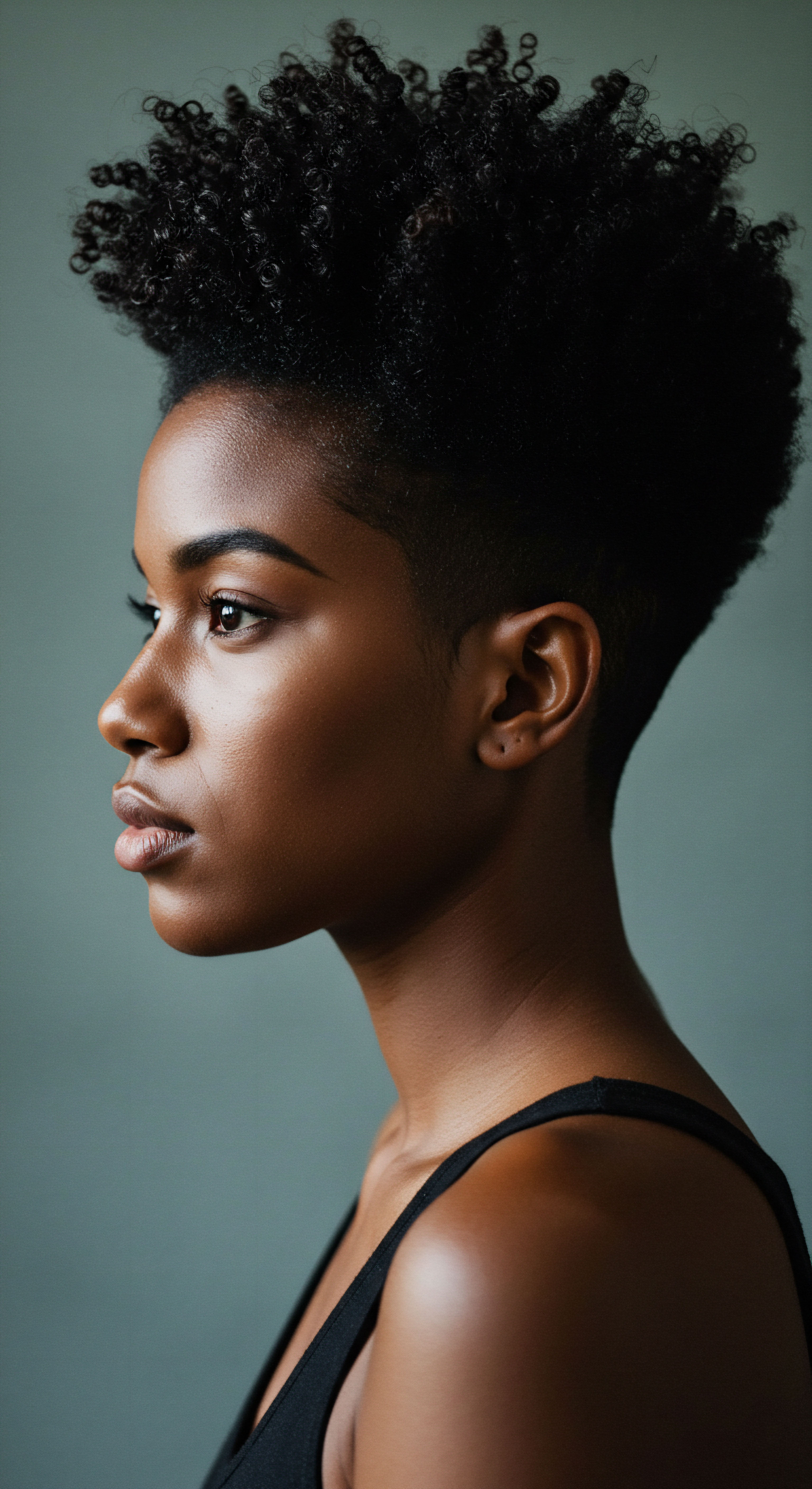
The Hair Follicle ❉ A Sculptor of Strands
The hair follicle, a complex biological structure, acts as the primary architect of hair shape. Within its depths, cells multiply and differentiate, forming the hair shaft. The manner in which these cells are arranged and the subsequent distribution of keratin—the primary protein component of hair—are influenced by the follicle’s curvature.
In straight hair, keratin is more uniformly distributed, while in curly hair, an uneven buildup occurs on the inside of the curl, prompting the hair to bend and spiral. This asymmetry is a key element in the Curl Pattern Science.
Understanding the hair follicle’s shape provides the initial insight into the natural inclination of hair to coil, wave, or remain straight.
Beyond the follicle’s shape, other microscopic elements contribute to the final curl definition. The presence and arrangement of Disulfide Bonds, strong chemical linkages between sulfur atoms in keratin, influence the hair’s permanent shape. A higher density of these bonds often correlates with tighter curls, providing structural integrity to the coil.
Additionally, the differential growth rates of cells on opposing sides of the hair follicle contribute to its curved trajectory. These microscopic nuances offer a more complete delineation of why hair takes on its specific, captivating form.
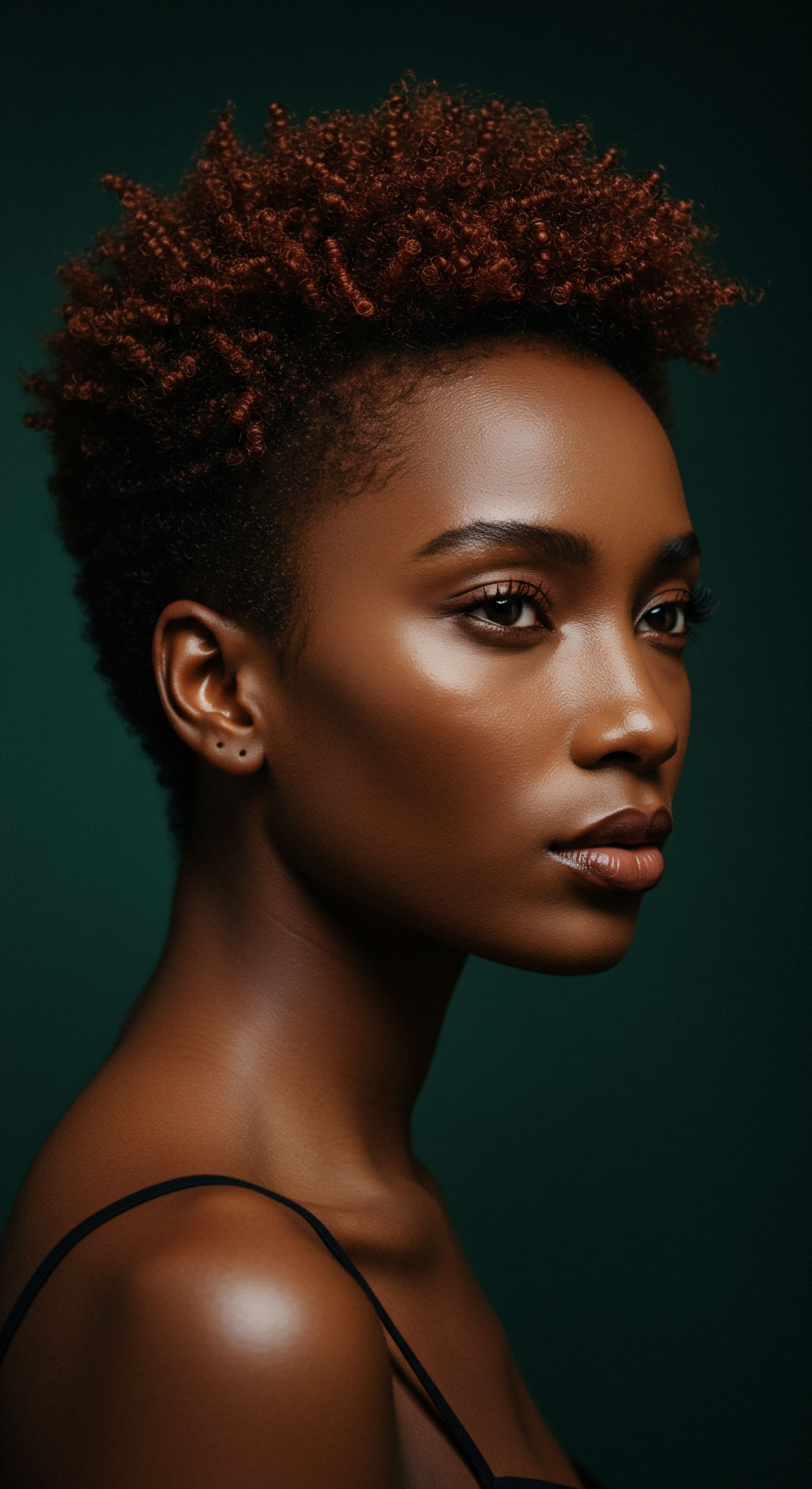
Basic Elements of Hair Structure and Curl
Exploring the basic elements that define hair’s physical form helps to clarify the visible differences across hair types. Each component contributes to the overall strength, elasticity, and visual appeal of a strand.
- Hair Shaft ❉ The visible part of the hair, composed of three layers ❉ the cuticle, cortex, and medulla. The cortex, the middle layer, is where the keratin proteins are found, largely determining the hair’s strength and elasticity.
- Cuticle ❉ The outermost layer of the hair shaft, consisting of overlapping, scale-like cells that protect the inner cortex. The way these scales lie influences hair’s smoothness and shine.
- Cortex ❉ The central and thickest layer of the hair, housing the keratin proteins, pigments, and moisture. Its structure and the distribution of keratin within it directly impact the hair’s curl.
- Medulla ❉ The innermost layer, not always present in all hair types, and its function is still being fully understood.

Intermediate
Moving beyond the foundational aspects, an intermediate grasp of Curl Pattern Science involves a deeper understanding of how these inherent biological characteristics translate into the practical realities of textured hair care and its cultural significance. This perspective illuminates the ways in which hair’s natural form dictates its unique needs and behaviors, guiding us toward more attuned and respectful care rituals. The Curl Pattern Science, in this context, becomes a framework for recognizing the individuality of each strand, informing choices that genuinely support hair health and vitality. It is a nuanced interpretation that extends beyond simple identification, delving into the dynamic interplay of structure and environment.
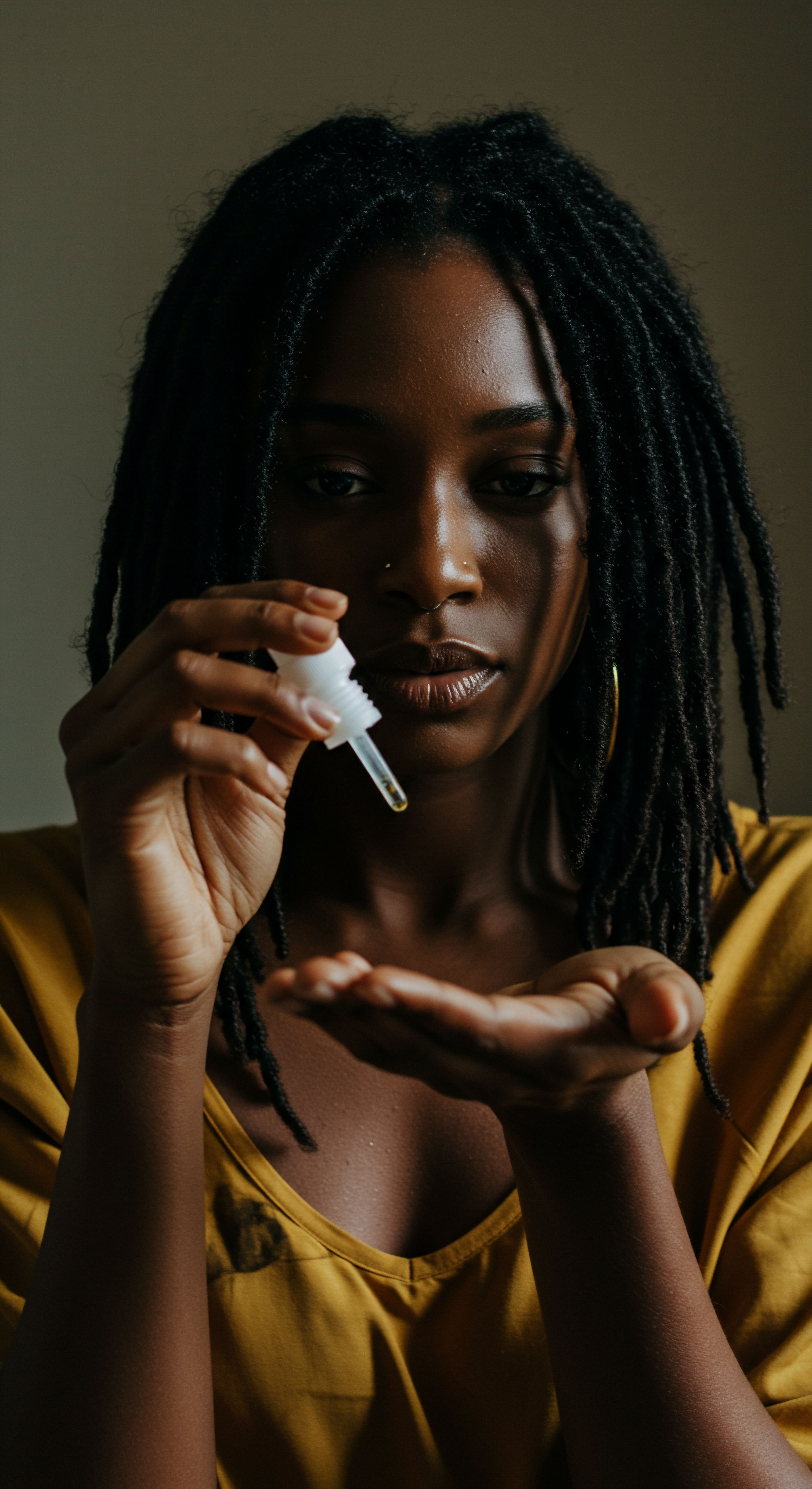
Hair’s Unique Properties and Care Implications
The distinctive morphology of textured hair, characterized by its elliptical cross-section and curved follicle, bestows upon it specific biophysical properties that differ from straight hair. This includes variations in Porosity, the hair’s ability to absorb and retain moisture; Elasticity, its capacity to stretch and return to its original shape; and overall Strength. Afro-textured hair, for instance, often exhibits a higher density of disulfide bonds, contributing to its unique structure, yet its high curvature can also render it more vulnerable to mechanical stress and breakage. This vulnerability, however, speaks not to inherent weakness, but to a delicate complexity requiring specialized consideration.
The science of curl patterns helps decode hair’s unique needs, guiding us toward thoughtful care that honors its natural resilience.
The spiral nature of textured hair creates points of weakness along the hair shaft where the cuticle layers may be raised, making it more susceptible to dryness and tangling. This structural reality necessitates a different approach to hydration and detangling compared to straighter hair types. Understanding this scientific basis clarifies why certain products or techniques, like deep conditioning and gentle manipulation, are not just preferences but fundamental requirements for maintaining the serenity and strength of textured strands. The application of Curl Pattern Science here translates directly into more effective and less damaging daily practices.

The Spectrum of Curl Classification and Its Limitations
Various classification systems have emerged to describe the vast diversity of curl patterns, with Andre Walker’s system (1a-4c) being widely recognized in the textured hair community. While these systems offer a common language for discussion and product selection, their scientific validity and historical context warrant careful consideration. The very notion of classifying hair by type has a complex, sometimes troubling, lineage.
Historically, hair typing systems were, at times, intertwined with problematic ideologies. For example, early 20th-century classifications by figures like Eugen Fischer, a German eugenicist, sought to categorize hair based on “proximity to whiteness,” contributing to racist hierarchies. While contemporary systems aim to be descriptive rather than discriminatory, their roots serve as a potent reminder of the importance of embracing the full spectrum of hair diversity without imposing arbitrary value judgments. The scientific explanation of curl pattern, therefore, transcends mere categorization, inviting a deeper appreciation for individual variation.
The practical application of understanding Curl Pattern Science in daily hair care is multifaceted. It guides decisions on everything from shampoo frequency to styling techniques. For instance, tightly coiled hair, due to its shape, often appears shorter than its actual length—a phenomenon known as Shrinkage. This characteristic influences how products are applied to ensure even distribution and how styles are chosen to celebrate or elongate the hair.
Consider the following table outlining common hair properties influenced by curl pattern ❉
| Property Follicle Shape |
| Straight Hair (Type 1) Round |
| Wavy Hair (Type 2) Slightly Oval |
| Curly Hair (Type 3) Oval |
| Coily Hair (Type 4) Elliptical/Flat |
| Property Moisture Retention |
| Straight Hair (Type 1) High (easy distribution of natural oils) |
| Wavy Hair (Type 2) Moderate |
| Curly Hair (Type 3) Lower (oils struggle to travel down shaft) |
| Coily Hair (Type 4) Lowest (most challenging oil distribution) |
| Property Breakage Propensity |
| Straight Hair (Type 1) Low |
| Wavy Hair (Type 2) Low to Moderate |
| Curly Hair (Type 3) Moderate to High |
| Coily Hair (Type 4) Highest (due to curvature and dryness) |
| Property Shrinkage |
| Straight Hair (Type 1) Minimal |
| Wavy Hair (Type 2) Some |
| Curly Hair (Type 3) Significant |
| Coily Hair (Type 4) Most Pronounced |
| Property These properties highlight the distinct care requirements across different curl patterns, emphasizing the need for tailored routines. |

Advanced
At its most sophisticated level, Curl Pattern Science represents a profound, multi-disciplinary inquiry into the very architecture of hair, particularly within the rich context of textured hair, Black hair, and mixed-race hair heritage. It is a rigorous, expert-driven explication that transcends superficial categorization, offering a deep dive into the biological, genetic, historical, and socio-cultural forces that sculpt and give meaning to every coil and wave. This advanced understanding demands a comprehensive analysis, moving beyond mere description to consider the intricate dance of molecular components, ancestral legacies, and prevailing societal norms. The meaning of Curl Pattern Science here is not static; it is a dynamic, evolving field that continually invites re-evaluation and deeper appreciation.

Molecular Architecture of Curl Formation
The genesis of curl extends to the molecular realm, where specific genes orchestrate the development of the hair follicle and the proteins within it. Research indicates that the EDAR Gene and variations in Trichohyalin, a protein integral to the inner root sheath, play significant roles in determining hair shape, particularly in populations with African ancestry. These genetic predispositions lead to the asymmetrical growth of cells within the hair follicle, where cells on the outer curve of the follicle grow longer than those on the inner curve.
This differential growth compels the hair shaft to bend and twist as it emerges, forming the characteristic spiral. The complexity of these genetic pathways suggests that hair curl is not a singular trait but rather the result of a delicate interplay of numerous genes, each contributing a subtle influence.
Furthermore, the distribution of Keratin, the primary structural protein of hair, is not uniform in curly strands. While straight hair exhibits a more even spread, curly hair often shows an uneven accumulation of keratin on the inner side of the curl. This intrinsic asymmetry at the cellular level is a fundamental biological mechanism that drives the macroscopic curl.
The molecular composition of hair lipids also varies across ethnic hair types; Afro-textured hair, for instance, has been observed to possess a higher overall lipid content compared to European and Asian hair. Despite this higher lipid presence, its unique structure can make it prone to perceived dryness, underscoring the necessity for care strategies that honor its specific biological makeup.
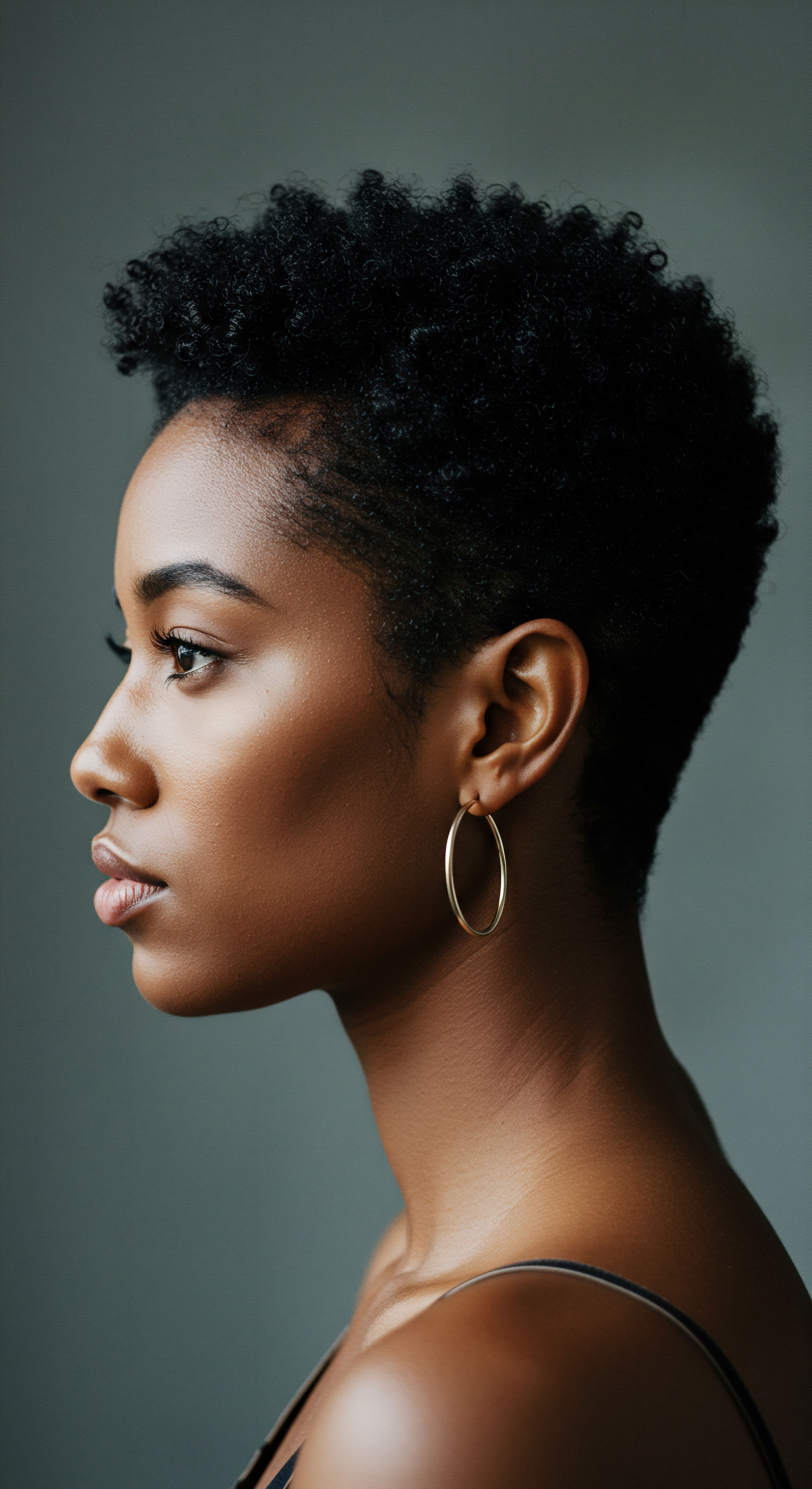
The Sociological and Psychological Dimensions of Curl Pattern
The scientific understanding of curl patterns cannot be disentangled from its profound sociological and psychological implications, especially for individuals of Black and mixed-race heritage. Hair, in these communities, serves as a powerful symbol of identity, heritage, and resistance. Historically, societal beauty standards, often rooted in Eurocentric ideals, have devalued natural textured hair, creating a pervasive system of discrimination. This “texturism” often prioritizes looser curl patterns over tighter coils, perpetuating harmful biases.
A compelling illustration of this societal bias comes from a 2020 study by researchers at Michigan State University and Duke University. Their findings revealed that Black Women with Natural Hairstyles Were Perceived as Less Professional and Less Competent, and Were Significantly Less Likely to Be Recommended for Job Interviews Compared to Black Women with Straightened Hair or White Women with Any Hair Type. This empirical evidence underscores a systemic issue where the very manifestation of one’s natural curl pattern can impede economic and social advancement. The study also highlighted that this discrimination was more pronounced in industries with conservative dress norms, such as consulting, compared to more creative fields like advertising.
Beyond biology, Curl Pattern Science reveals a landscape shaped by historical bias, where the natural presentation of textured hair has faced profound societal and professional barriers.
The psychological toll of such discrimination is substantial. Black women frequently report feeling compelled to alter their natural hair to conform to perceived professional standards, often at the expense of hair health and personal authenticity. This continuous negotiation of identity and appearance can lead to heightened stress, anxiety, and diminished self-esteem.
The act of embracing one’s natural curl pattern, therefore, becomes a potent act of self-acceptance and cultural affirmation, challenging deeply entrenched biases. Understanding Curl Pattern Science from this advanced perspective means recognizing the intricate link between hair biology, individual well-being, and broader social justice.

Innovations and Future Directions in Textured Hair Science
The ongoing research in Curl Pattern Science is not merely academic; it holds the potential to revolutionize hair care and dismantle long-standing inequities. Scientists are exploring advanced methods for classifying hair based on quantitative geometric parameters, such as hair fiber ellipticity and the number of contours per centimeter, aiming for a more precise and objective understanding that moves beyond subjective visual assessments. These efforts promise to inform the development of truly tailored products and practices that cater to the specific biophysical needs of diverse textured hair types, rather than forcing them into ill-fitting molds.
The implications extend to product formulation, where a deeper knowledge of hair’s lipid composition and structural vulnerabilities can lead to more effective moisturizing agents and strengthening treatments. For instance, while Afro-textured hair has a higher lipid content, its unique curvature affects how these lipids are distributed, often leading to a perception of dryness. Future advancements in Curl Pattern Science aim to leverage these insights to create solutions that optimize moisture management and minimize breakage, truly honoring the integrity of each curl.
The ongoing conversation surrounding Curl Pattern Science also serves as a catalyst for cultural shifts. By providing a scientific explanation for the unique properties of textured hair, it helps to demystify its characteristics and challenge preconceived notions of “manageability” or “professionalism.” This deeper scientific explanation, coupled with a compassionate understanding of heritage, empowers individuals to celebrate their natural hair, fostering a greater sense of self-worth and belonging. It propels a movement towards a world where hair diversity is not just accepted but actively celebrated, transforming the landscape of beauty and care for generations to come.
The long-term success in the textured hair industry, from a corporate and expert perspective, hinges on a profound commitment to the Curl Pattern Science. This commitment means investing in research that genuinely addresses the unique biological and structural properties of Black and mixed-race hair, moving away from Eurocentric benchmarks that have historically underserved these communities. It necessitates developing products formulated not merely to alter texture, but to enhance its inherent health and resilience, acknowledging its distinct requirements for moisture, strength, and protection. For example, recognizing that Afro-textured hair has a slower growth rate and a higher proportion of hairs in the resting (telogen) phase compared to Caucasian hair, alongside its susceptibility to breakage due to tight coiling, demands specialized approaches to product development and marketing.
Such insights lead to innovative solutions for scalp health, breakage reduction, and optimal hydration, rather than promoting practices that can be damaging. This deep scientific understanding, combined with a cultural sensitivity that respects hair as a symbol of identity and heritage, is the pathway to true innovation and sustained impact in the textured hair market.
Consider the critical areas of research and development for Curl Pattern Science, particularly concerning textured hair ❉
- Genetic Markers ❉ Further exploration of specific genetic variations (e.g. EDAR, trichohyalin, KRT74, CUTC) that influence hair follicle morphology and keratin distribution in diverse populations.
- Biomechanical Properties ❉ Advanced studies on the tensile strength, elasticity, and fracture patterns of highly curved hair fibers, especially at points of curvature.
- Lipid and Moisture Dynamics ❉ Comprehensive analysis of the unique lipid profiles and water absorption/retention mechanisms in different textured hair types to formulate superior moisturizing products.
- Follicular Micro-Environment ❉ Investigation into the cellular and molecular processes within the curved hair follicle that contribute to its distinct growth patterns and vulnerability.
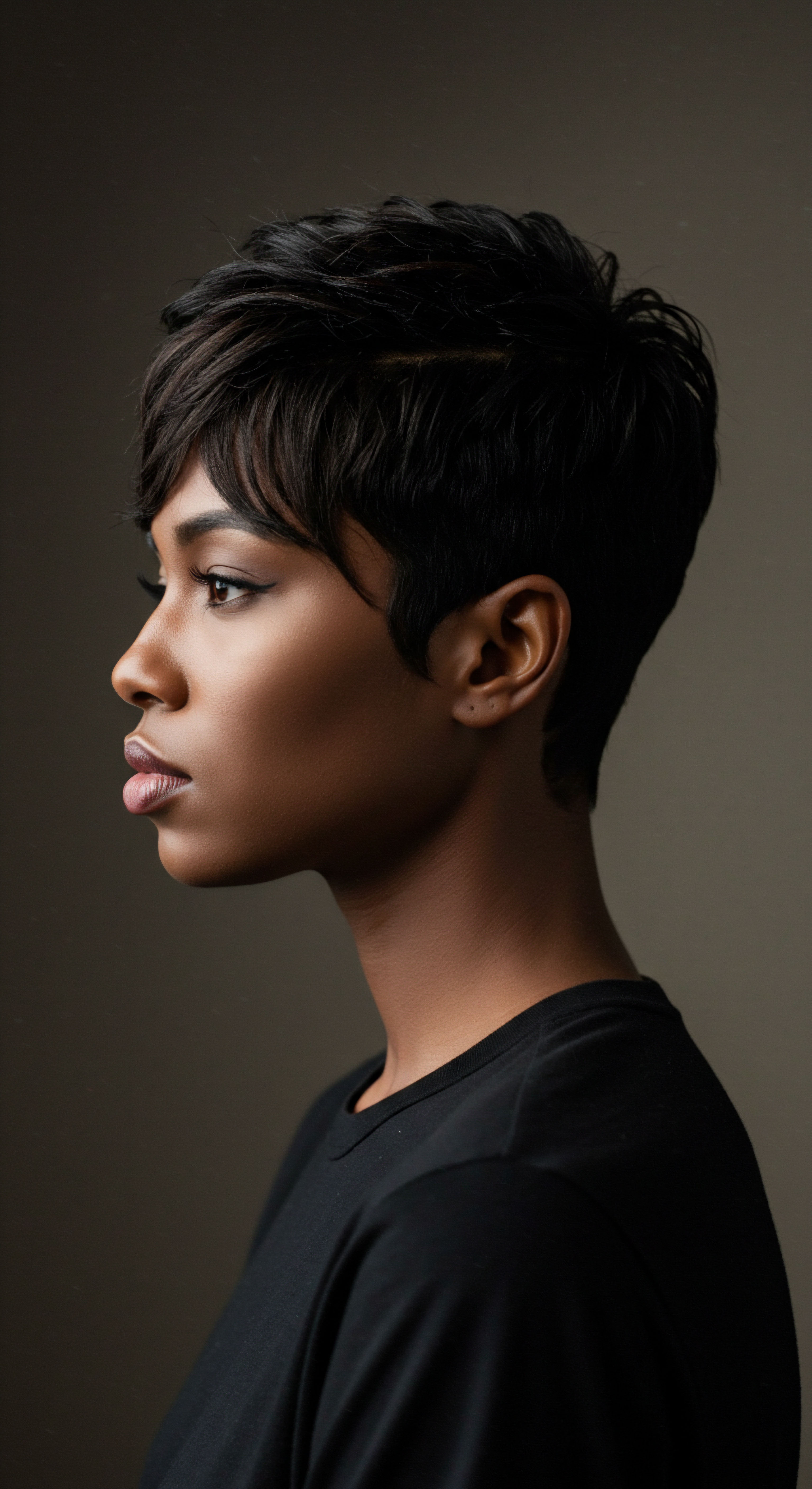
Reflection
As we draw our thoughts together on Curl Pattern Science, a serene understanding begins to settle, much like the quiet wisdom gathered from a lifetime of cherished experiences. It is a field that invites us not only to observe the visible artistry of textured hair but to delve into the very heart of its being—its genetic whispers, its cellular choreography, and its profound cultural resonance. For Roothea, this exploration is a gentle reaffirmation of beauty in all its diverse expressions.
The journey of understanding one’s curl pattern is a deeply personal one, yet it is also a collective narrative, echoing the stories of resilience, adaptation, and celebration woven through generations of Black and mixed-race communities. It reminds us that science, when approached with empathy and a spirit of inquiry, can illuminate paths to greater self-acceptance and a more inclusive world, honoring the inherent magnificence of every unique strand.
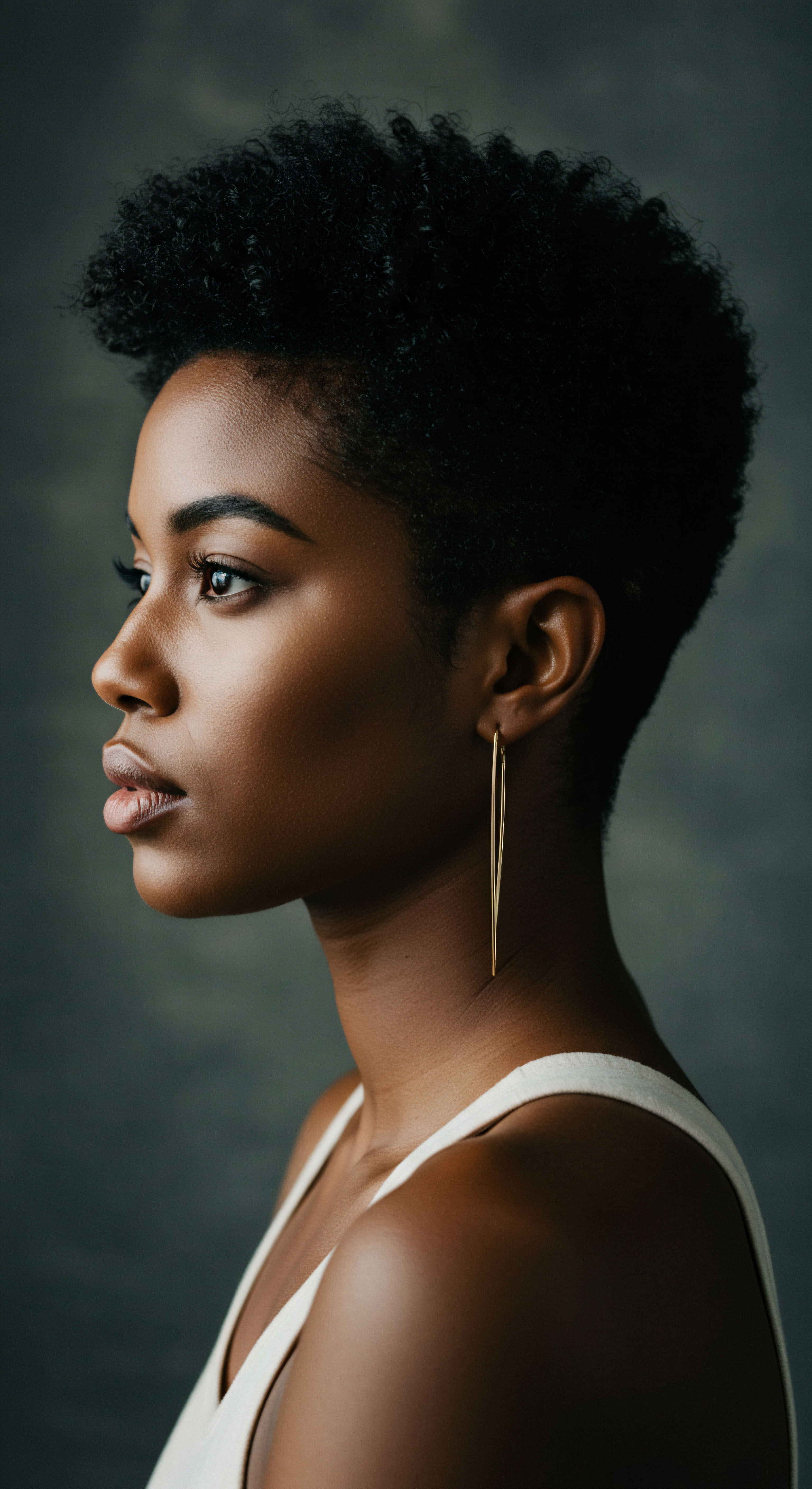
References
- Abeywickrama, M. Palamuthusingam, P. Mbilishaka, A. & O’Mahony, S. (2024). The Genomic Variation in Textured Hair ❉ Implications in Developing a Holistic Hair Care Routine. Cosmetics, 11 (2), 40.
- La Ruche, P. et al. (2007). Worldwide Diversity of Hair Curliness ❉ A New Method of Assessment. International Journal of Dermatology, 46 (S1), 2–6.
- Koval, C. Z. & Rosette, A. S. (2020). The Natural Hair Bias in Job Recruitment. Social Psychological and Personality Science, 11 (7), 968-977.
- Michigan State University. (2020, September 18). MSU research exposes discrimination against Black women with natural hair. MSU Today.
- Donaldson, S. (2021, October 25). The Controversial History of the Hair Typing System. Byrdie .
- Harland, D. P. (2018). The physics of wool crimp. Journal of Experimental Biology, 221 (Pt 19), jeb188737.
- Mangelsdorf, S. et al. (2012). Ethnic differences in skin physiology, hair follicle morphology and follicular penetration. Skin Pharmacology and Physiology, 25 (3), 119-126.
- Legal Defense Fund. (n.d.). Hair Discrimination FAQ .
- White-Jolivette, T. (2020). African American Women’s Experience of Wearing Natural Textured Hair (Doctoral dissertation, Walden University).
- Oregon.gov. (n.d.). NATURAL HAIR DISCRIMINATION .
- Mangelsdorf, S. et al. (2006). Ethnic variation in vellus hair follicle size and distribution. Skin Pharmacology and Physiology, 19 (3), 163-170.
- Curls Uncovered ❉ Embracing the Beauty and Science of Curly Hair. (n.d.). KeraStraight .
- Kowalski, K. (2024, November 14). Science works to demystify hair and help it behave. Science News Explores .
- Bagalini, A. (2021, February 11). How wearing natural hairstyles harms the job prospects of Black women. World Economic Forum .
- Mangelsdorf, S. et al. (2006). Ethnic Variation in Vellus Hair Follicle Size and Distribution. ResearchGate.
- Mbilishaka, A. et al. (2023). The Person Beneath the Hair ❉ Hair Discrimination, Health, and Well-Being. International Journal of Environmental Research and Public Health, 20 (15), 6520.
- Westgate, G. E. et al. (2017). The biology and genetics of curly hair. Experimental Dermatology, 26 (6), 483-490.
- Rajan-Rankin, S. et al. (2023). “I am now being who I am and I’m proud of it” ❉ Hair related personal and social identity and subjective wellbeing of older Black women in the UK. Journal of Ethnic and Migration Studies, 49 (19), 5041-5060.
- White-Jolivette, T. (2020). “African American Women’s Experience of Wearing Natural Textured Hair”. Walden University.
- Koch, S. L. et al. (2021). Impact of Hair Type, Hair Sample Weight, External Hair Exposures, and Race on Cumulative Hair Cortisol. Frontiers in Psychology, 12, 660893.
- CurlsBot. (2025, March 8). The Science of Curly Hair Typing .
- Rosado, S. (2003). The Cost Of Curls ❉ Discrimination, Social Stigma, And Identity Oppression Of Black Women Through Their Hair (Doctoral dissertation, William & Mary).
- American Chemical Society. (2023, March 28). Reclassifying curls, coils, and kinks. Chemical & Engineering News .
- Afro-textured hair. (n.d.). EBSCO Research Starters .
- Indiana Public Media. (2019, January 28). The Biology of Curls. A Moment of Science.
- California State University, Los Angeles. (n.d.). A HAIRY SITUATION ❉ FIGHTING HAIR BIAS IN THE WORKPLACE .
- Mirmirani, P. (2024, December 16). Curly Hair From Genes (GWAS) to Functional Genomics ❉ Wnt-Secreting and -Receiving Macrophages Orchestrate Hair Types. A Hypothesis with Functional Implications. Preprints.org.
- Khumalo, N. P. et al. (2019). The what, why and how of curly hair ❉ a review. Proceedings of the Royal Society A ❉ Mathematical, Physical and Engineering Sciences, 475 (2231), 20190302.
- Manning, J. (2012). The Sociology of Hair ❉ Hair Symbolism Among College Students (Master’s thesis, Western Connecticut State University).
- LaGrange, L. et al. (2022). Physicochemical Properties of Textured Hair. Journal of Cosmetic Science, 72 (6), 711-731.
- Mkentane, K. et al. (2017). Geometric Classification of Scalp Hair for Valid Drug Testing, 6 More Reliable than 8 Hair Curl Groups. PLoS One, 12 (6), e0172834.
- Byrd, A. & Tharps, L. D. (2014). Hair Story ❉ Untangling the Roots of Black Hair in America. St. Martin’s Press.
- Pierre, J. (2002). nappy hair in the diaspora ❉ exploring the cultural politics of (Doctoral dissertation, University of Florida).
- Jenkins, N. D. (n.d.). Ujima Natural Hair and the Black Community Black Paper .
- St George’s Hospital. (n.d.). Afro-textured Hair .
- Taylor & Francis Online. (n.d.). “I am now being who I am and I’m proud of it” ❉ Hair related personal and social identity and subjective wellbeing of older Black women in the UK .
- Mbilishaka, A. (2024, December 9). Don’t Get It Twisted ❉ Untangling the Psychology of Hair Discrimination Within Black Communities. ResearchGate.
- Wortmann, F. J. et al. (2024, December 9). Why is hair curly?‐Deductions from the structure and the biomechanics of the mature hair shaft. ResearchGate.
- Ouellette, M. (2018). The importance of hair in the identity of Black people. Nouvelles pratiques sociales, 31 (2), 210-224.
- Loussouarn, G. et al. (2007). Worldwide Diversity of Hair Curliness ❉ A New Method of Assessment. ResearchGate.
- Westgate, G. E. et al. (2021). The Biology and Genetics of Curly Hair. ResearchGate.
- Consumer Notice. (n.d.). Hair Discrimination in the Workplace ❉ How it Affects Mental Health .
- Medical News Today. (2021, September 30). Biracial hair types ❉ What to know .
- Nyela, O. (2021). Braided Archives ❉ Black hair as a site of diasporic transindividuation (Master’s thesis, York University).
- Jenkins, N. D. (2020). Examining Afrocentricity and Identity Through the Reemergence and Expression of Natural Hair (Doctoral dissertation, University of South Carolina).